- Details
- Written by Super User
[grid6 first]
A world of awards
“Cantina dei Vini Tipici dell’Aretino” congratulates all members associated, that, thanks to the motivations and qualities of those who have demonstrated foresight, initiative and originality in his style of living and working, taking to heart the winery, understood not only as a company, but as a set of human and cultural values. Passions and traditions have brought us over the years to achieve important results. Goals achieved not only in our wonderful country but, especially abroad, in places where the competition among the different types of wine, and the various national and international wineries.
[/grid6]
[grid6 last]  [/grid6] [keywordbox]
[/grid6] [keywordbox]
[grid3 first] 
ITALY
"National Awards for taste and quality"
Every year “Cantina dei Vini Tipici dell’ Aretino s.c.a.” won national awards for taste and quality of our wines.
[/grid3] [grid3] 
GERMANY
Weinwirtschaft German
“Top 20 Italian winery”
Year 2013, Year 2012, Year 2011
[/grid3] [grid3] 
RUSSIAN
"Moscow Wine Challenge"
Gold Award 2011
[/grid3] [grid3 last] 
CHINA
"Shanghai International Wine Challenge"
Silver Award 2013, Bronze Award 2010[/grid3]
- Details
- Written by Super User
The Ganimede Method®
The Ganimede Method® represents a strategic investment aimed at the production of quality and at the same time at the environmental and energy sustainbility .Ganimede has allowed us to obtain homogeneity to the product , with an optimal contact between the skins and the liquid, by creating musts and well balanced wines as a result , and it helps us to give to wines more soft tannins thus contributing to get elegance and harmonius in our products.
How does the ganimede method work? We have an optimum temperature control and we also manage the macro-oxygenation directly through the Ganimede control panel.
Sangiovese in some vintages is characterised by grape seeds that are often immature and therefore wines that are obtained by vinification in traditional tanks are often sharp, so that a longer aging is necessary. In 4/5 days of fermentation the Metodo Ganimede® allows us to achieve the results that in the traditional wine-makers we can get not before 7-8 days.
It's just from tasting that we can understand what it means selective extraction of only more palatable substances, without those green and often harsh and astringent tannins that make a wine unbalanced and less pleasant.
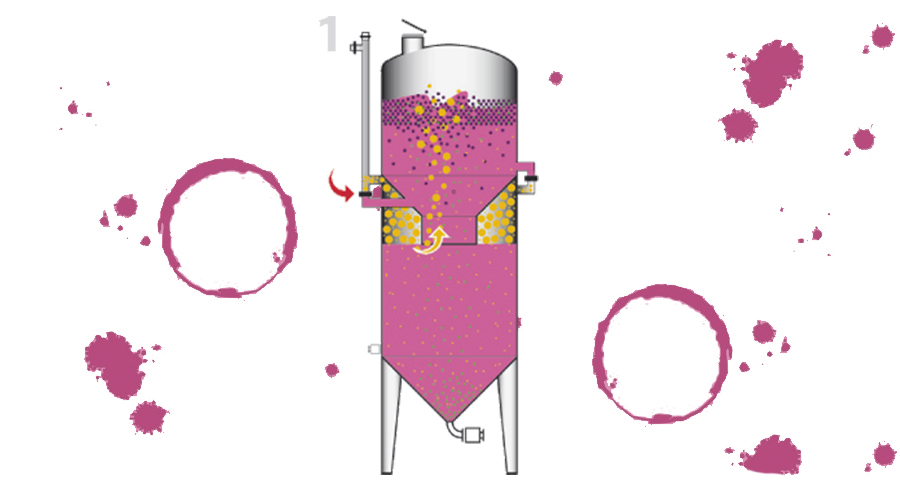
1. Filling and Cavity Saturation
Filling is performed from above. The rising of the mosto, the cavity between the outer casing and the funnel diaphragm remains empty because the air, unable to escape through the closed bypass, prevents the cavity from being filled. The grape marcs accumulate on the surface to create a cap. The carbon dioxide produced by the fermentation process quickly takes the place of the air in the cavity. As soon as the environment is saturated, the exceeding gas goes out by overflowing and since it is under pressure it creates large bubbles through the diaphragm neck, resulting in a constant restirring of the grape marcs that will always be saturated with the liquid and well shelled. Such restirring causes the fall of the grape seeds at the bottom by gravity.
2. Bypass Opening
The opening of the bypass causes a more massive action, releasing an enormous amount of gas accumulated in the cavity directly on the grape marcs, which will be flooded and deeply re-stirred, obtaining an effective smooth breakdown of the cap, avoiding mechanical actions that may lead to the forming of lees. Watch the action of the bypass opening seen from the upper cover. Once the grape-seeds have emerged, they accumulate in large quantity on the bottom of the fermenter. It is at this stage that the winemaker, according to his evaluations and to the characteristics of grape-seeds, may decide to exclude them from the winemaking process, by extracting them in large amount through the total discharge
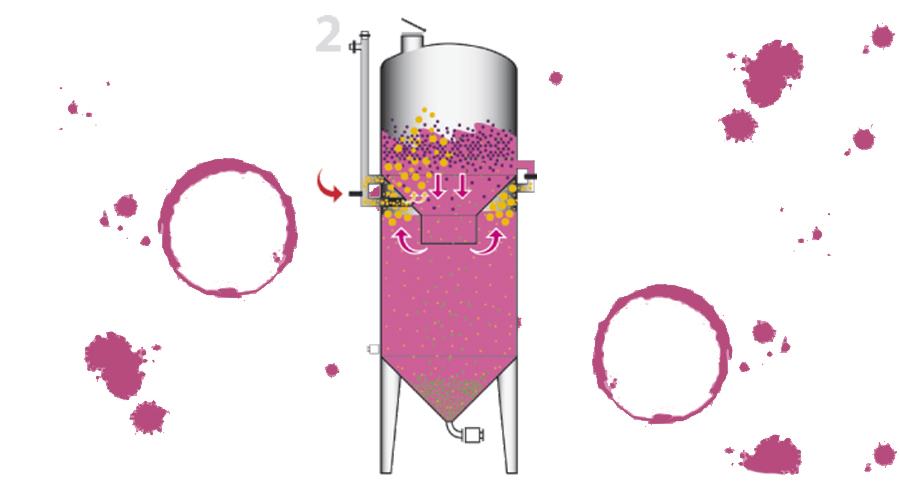
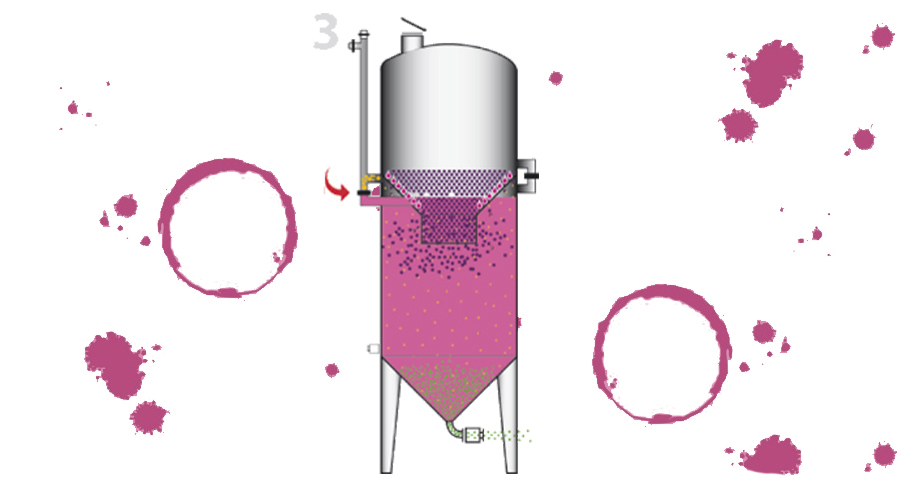
3. Dèlestage
As soon as the gas goes out, the cavity is flooded with the mosto, causing a sudden lowering of the level. The grape marcs saturated with liquid continue to release noble substances extracted from the peels; thus, repeating the typical stage of static draining DÉLESTAGE, in a controlled environment and without the use of pumps.
4. Leaching and static draining
Once the bypass is closed, the carbon dioxide from the fermentation process re-accumulates in the cavity causing a new rising of the level, which, pushing upward the grape marcs collected on the surface, causes a further stage of static draining that continues with the leaching process and allows the grape marcs to release an increasing quantity of substances into the mosto. The gas saturates the cavity once again and the whole sequence can be repeated whenever it is deemed appropriate to.
Ganimede Institutional Video from YouTube: Click here
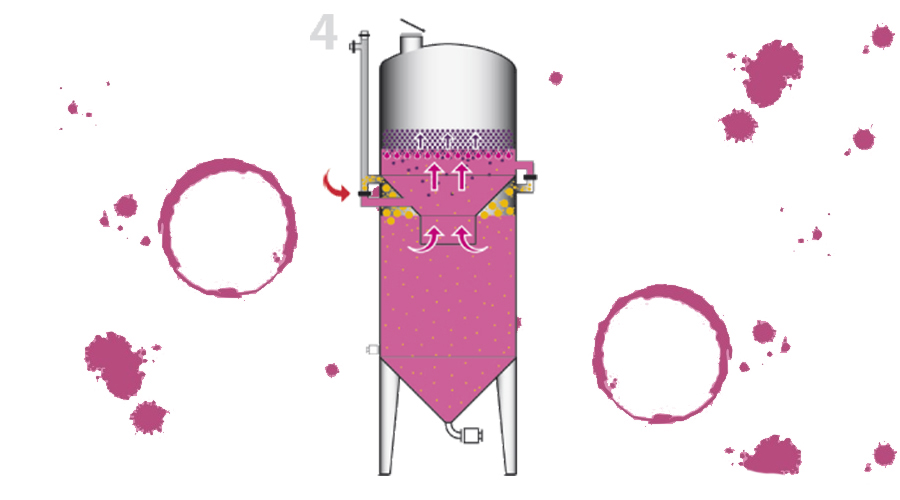
- Details
- Written by Super User
Productive Techniques
Thanks to the experience and professionality of the enologist Gianni Iseppi, our winery is always in the forefront. We have moved from a traditional vinification method , to a more sustainable and voted to quality approach , by introducing the Ganimede vinification method combined with temperatures control.
"The phase of the harvesting represents one of the key moments in the entire production chain. From excellent grapes we obtain excellent wines , this is one of the isnpiring principles of our winery."
From grapes to wine, how do we arrive at total quality?
By means of attention, continuous monitoring and specific technical advice. Several parameters influence and indicate the right time of collection (sugar content, Ph value, varietal and hygenic properties, as well as atmospheric events are all factors that, every year, help to establish the timing of harvest).
Thanks to the numerous tests and inspections that are periodically performed by our agronomist, following and advising our members, in addition to verifying that products are impeccable in every phase of the process, we are able to obtain top quality grapes.
The use of Metodo Ganimede® has allowed us to obtain homogeneity of the macerated product, with an optimal contact between the skins and the liquid. All the fermentation takes place at a controlled temperature, obtaining wines with softer tannins, balanced and elegant.
The refinement, which represents a key moment for the production of our red wines of Tuscany , can be done from steel to wood containers.
Our enologist Gianni Iseppi selects the precious woods in which the important Chianti DOCG and our Super Tuscan style IGT acquire elegance and become pure sips of pleasantness.
The healthiness of wines of Cantina is also guaranteed by the meticulous control and careful monitoring of the cleaning phases and sanitization of the equipment and areas, and it ends up with bottling and packaging of the product.
The basic steps of the wine production in our winery:
from the vineyard to the tables
Growing
The experience of the hands that cultivate and the natural hot sun of Tuscany let grow expanses of precious black and white grapes throughout the wine country.
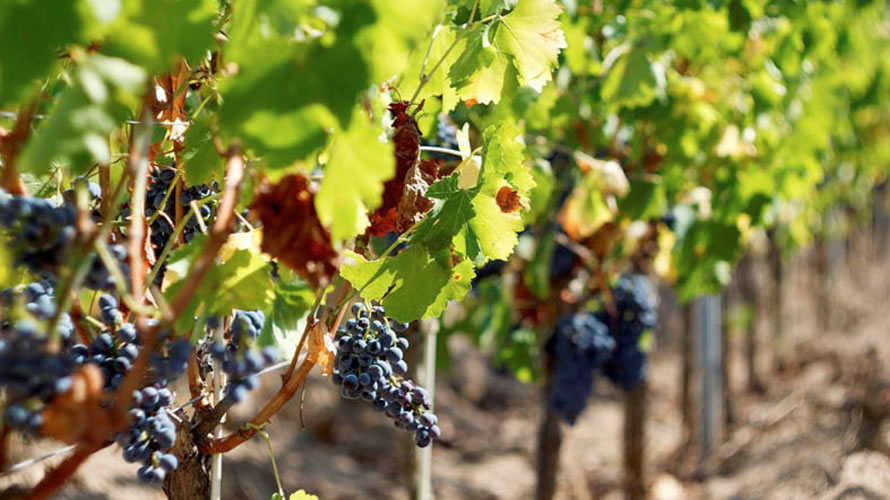
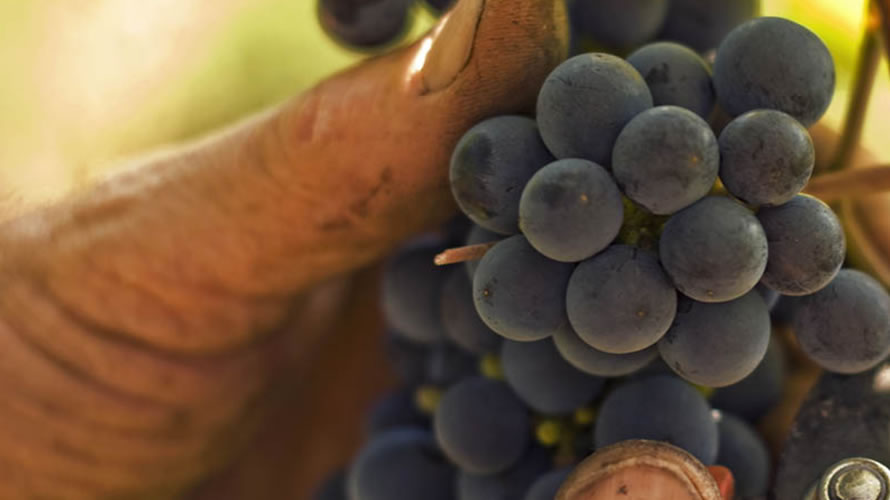
Harvest
Attention and continuous care of each plant allow our experienced winemakers to pick and process the grapes at the perfect time in order to give a quality product.
Fermentation
Fermentation is the heart of the wine production. Our special method Ganimede allows us to ferment our grapes using an innovative and sustainable technique and to get the perfect contact between the skins and the liquid during the maceration phase, even with significant volumes, greatly reducing the time of vinification. Thanks to the absence of mechanical organs and pumps we are able to obtain wines with much softer, balanced and elegant tannins. Wine is a product alive and natural and this respectful technology tangibly contributes to its quality.
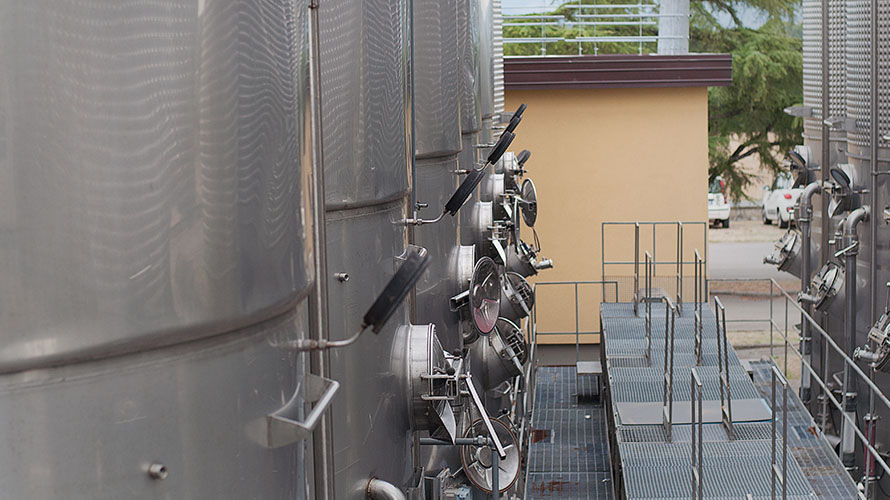
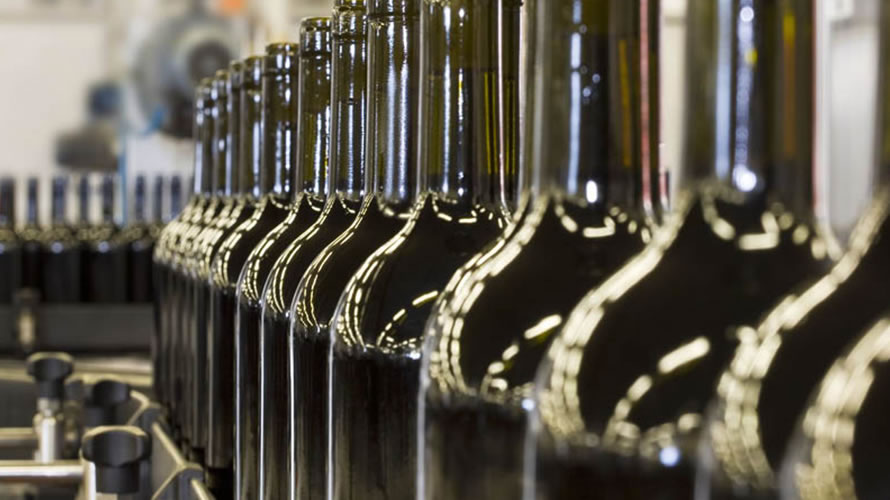
Bottling
With the efficient bottling system in a few steps we can get an average production of over 3000 bottles per hour.
- Details
- Written by Super User
[row] [grid9]
"Cantina dei Vini Tipici dell'Aretino" boasts of a number of important quality certifications. Each associated farmer follows a controlled viticulture, that is, which is relevant to the quality standards to which the winery is certified. Using only authorized products, every manufacturer can provide a natural farming and environmentally friendly 100%.
Numerous tests and inspections are regularly carried out by our agronomist that suggests and verifies that the products are pure and genuine in every phase of production .
The innovative Metodo Ganimede®, certified as safe and natural production system , ensures excellent fermentation of the grapes. The update to the latest wine-making systems and the constant revision of machinery ensure safe and advanced operational requirements.
Our Winery Enologist Director Dr. Gianni Iseppi is committed every year to control the entire chain of production and bottling of the winery.
Thanks to our professionalism, we can guarantee important points of quality and safety, assured by the most important worldwide certifications.
[/grid9] [grid3 last] [module id="272"][/grid3] [/row]
Quality is a fixed and constant commitment that has allowed the winery to be certified with the Standard in the marketplace.
[module id="276"]
- Details
- Written by Super User
Our History
Since 1970 we have been cultivating our vineyards with passion and professionalism, we produce typical wines of the Tuscan and Aretine hills. We defend nature, we preserve the landscape and we are committed every day to continue this tradition
1970
The BeginningBirth of “Cantina dei Vini Tipici dell’Aretino”. Initially there were considerable difficulties of aggregation and development of the mentality of cooperative enterprise. In 1971 it held the first vinification of the grapes conferred by the associated growers.
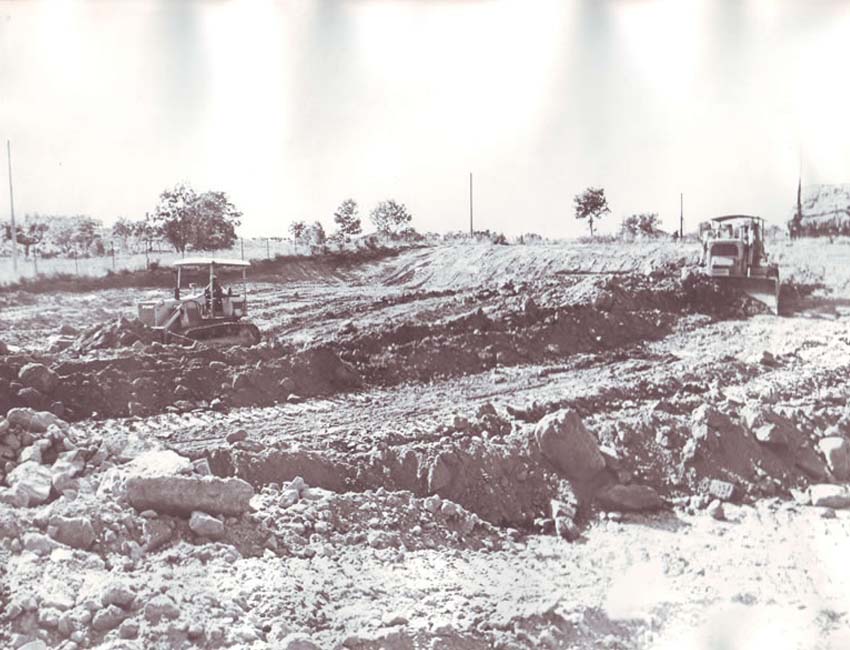
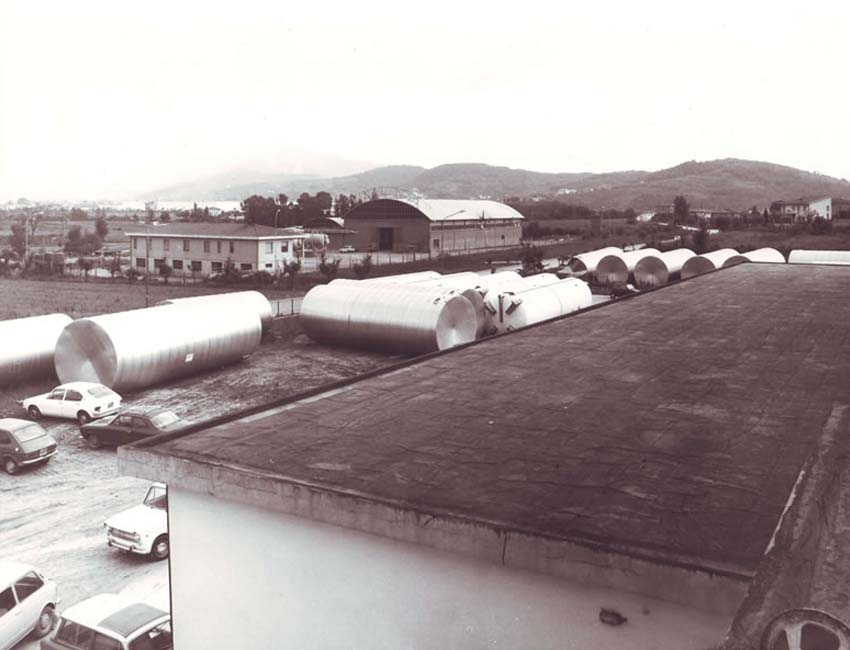
1980
CooperationBegan the working partnership with the enologist Dr. Gianni Iseppi. Initially there were some isunderstandings especially related to parochialism on the part of the members. Slowly, with tenacity and firmness, he disclosed co-operative spirit with the aim of quality production.
1990
ConfermentThe statute changed the contribution of the grapes produced by its members, from free donation to total. Funding reserved were introduced to wine producers who renewed vineyards investing in new clones, new varieties of grapes of excellent quality with suitable planting density. All this allows us in a few years to obtain grapes and natural wines as required by the globalization of markets.
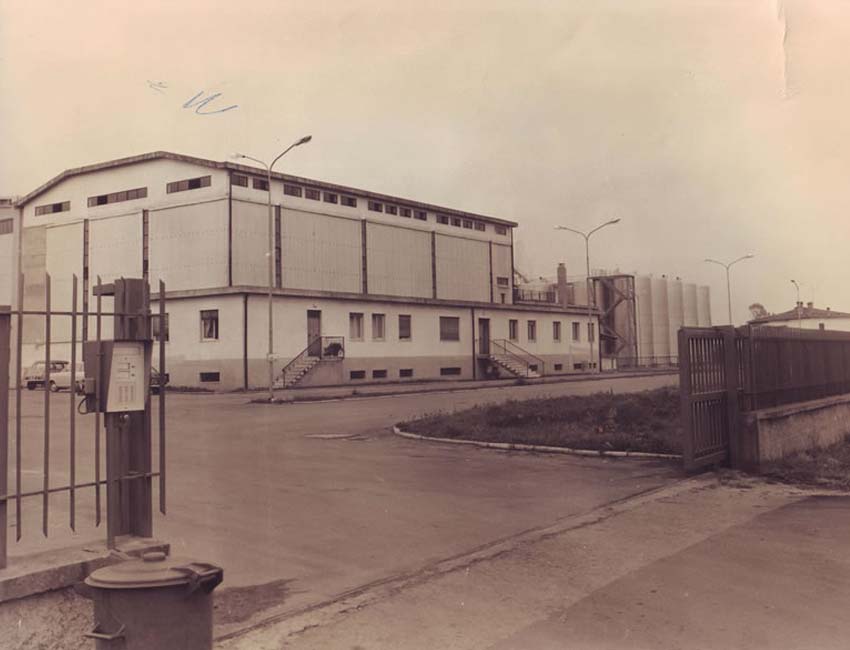
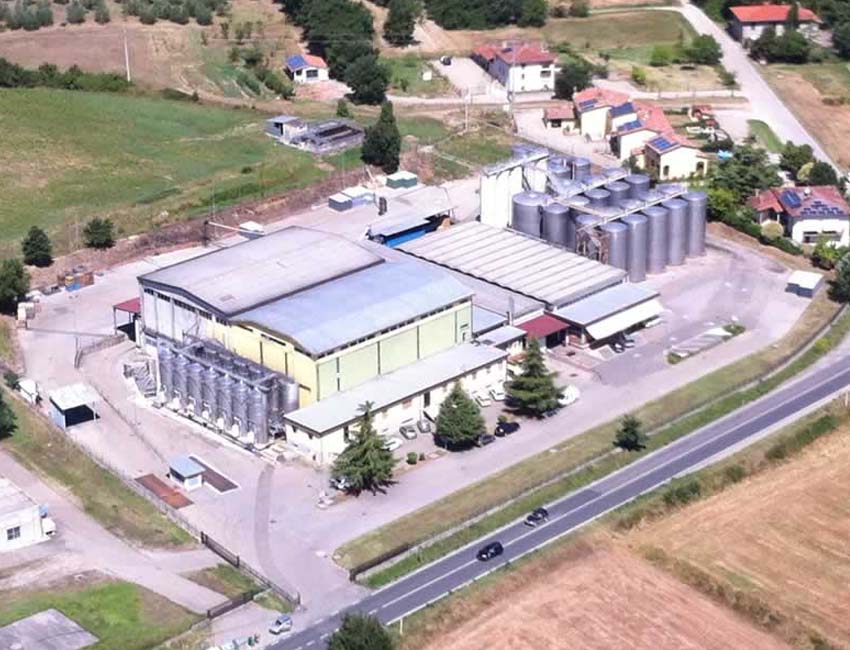
2000
DevelopmentTechnological modernizations were made with the Rural Development Plans (RDP) 2000 / 2006 and 2007 / 2013 and investments of over 2 million Euro. Among the applications stood out the vinification method patented Ganimede® on over 15,000 hectoliters of capacity and temperature control of fermentation on the whole production with the availability of more than 800,000 "frigorie" per hour.
TODAY
InnovationThanks to the experience and professionality of the enologist Gianni Iseppi, our winery is always in the forefront. We have moved from a traditional vinification method , to a more sustainable and voted to quality approach , by introducing the Ganimede vinification method combined with temperatures control.
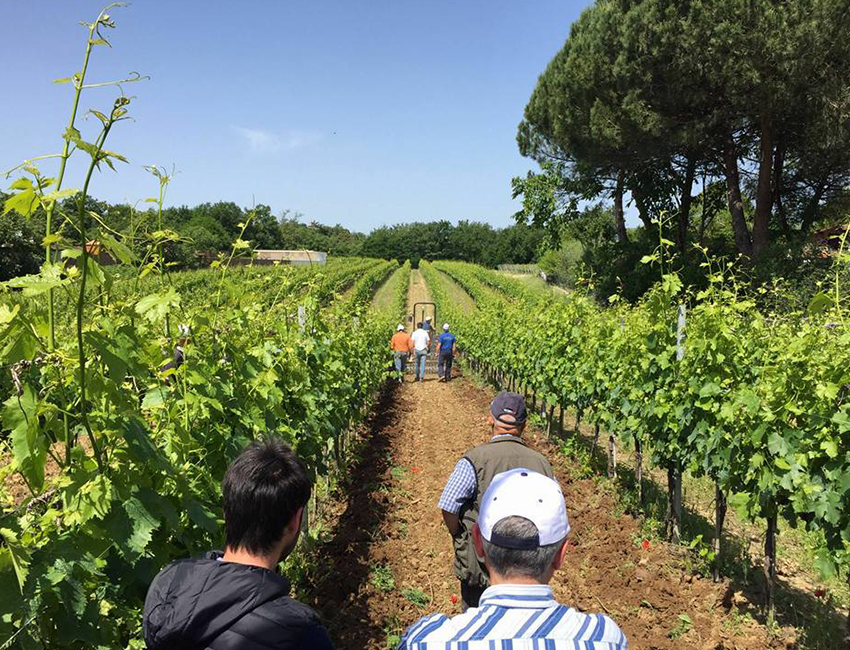
- Details
- Written by Super User
Winery
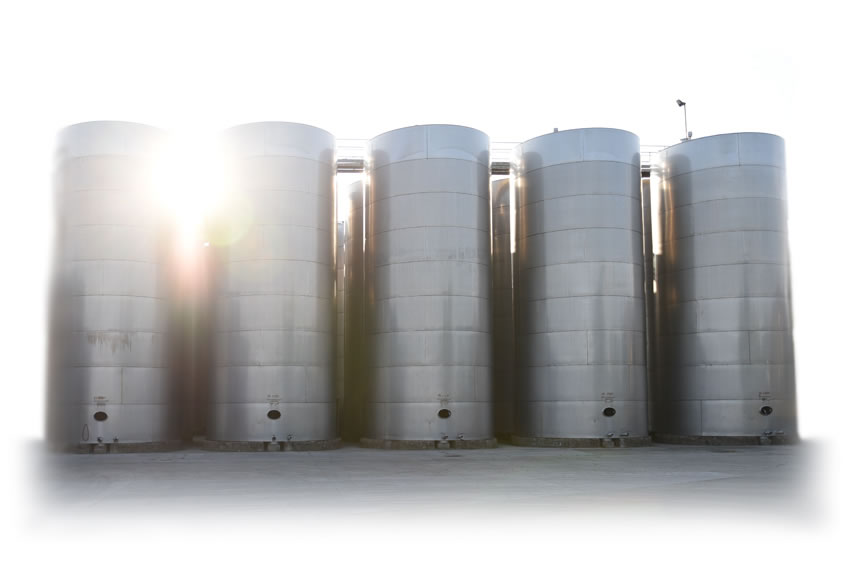
"Cantina dei Vini Tipici dell'Aretino is an Association of Winemakers bringing together more than four hundred members, owners of more than eight hundred hectares of vineyards in the province of Arezzo."
Established in 1970 the winery began the following year its work with the vinification of 10.000 quintals of grapes delivered. Delivered grapes are gradually increased thanks to the partecipation of other traditional farms all in the area.
The main mission of the winery has always been its seriousness, linked to its attachment to the territory and its viticulture as well as its commitment to innovation, that have allowed to finance the renewal of most of our members associated’s vineyards, investing in new clones, new varieties of grapes of excellent quality with adequate planting density.
Thanks to the Rural Development Plans (RDP) since 2000 to 2020 initial structures have been modernized and expanded to the current over eight hundred thousand hectoliters of its total capacity. Sustainable technological systems have been introduced with the qualitative aim of controlling the vinification temperatures on the whole production with the availability of more than 800 000 "Frigorie" per hour.
Among new applications stands out the patented vinification method Ganimede on most of the hectoliters of capacity winemaking sector. ( link parola “Ganimede”). Still respecting environmental impact, the company has installed a photovoltaic system in order to ensure its energy self-sufficiency, which covers over 70% of its total needs. In addition, 14 agrometeorological control units have been installed in the area where the grapes are conferred, in order to monitor the climatic trend and intervene in the vineyards only when necessary.
The average annual conferment exceeds sixty thousand quintals of grapes, divided for about a third for each of our denominations: DOCG Chianti, IGT Toscana and DOC Valdichiana Toscana




"The harvesting phase represents one of the key moments of the entire production chain. Excellent wines are obtained from excellent grapes, this is one of the inspiring principles of our winery"
"In our company shop you will find all our wines in bottles, in bulk and in bag in box. All strictly fruit of our grapes. Chianti and Bianco Valdichiana are the great protagonists of our product range also enriched by an excellent Tuscan extra virgin olive oil and some grappas from our own production."

Organization
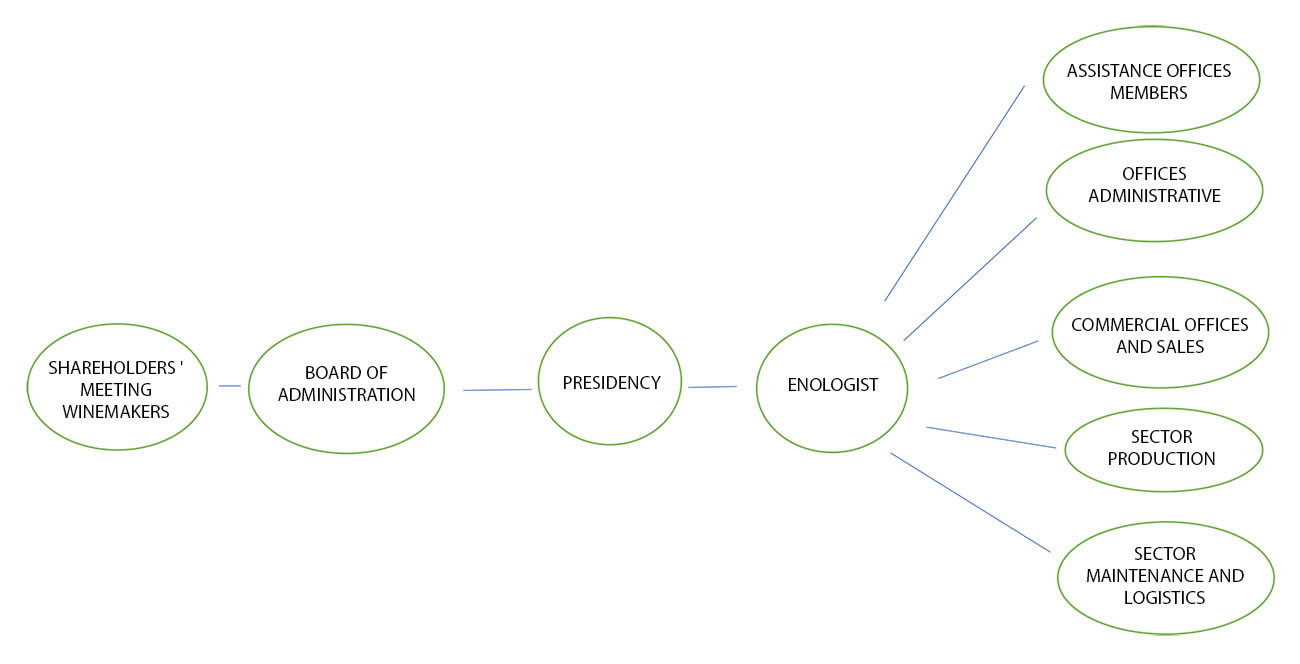
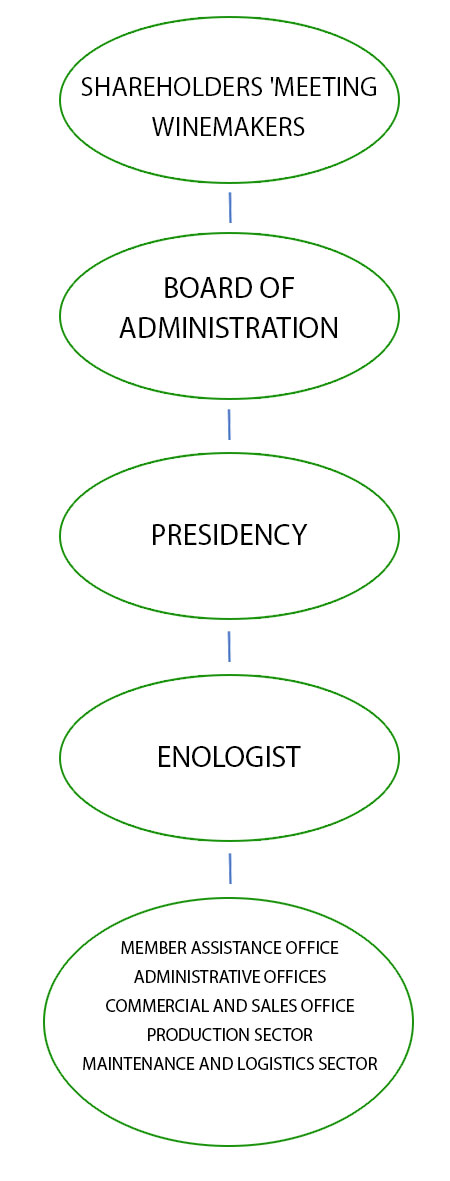
- Details
- Written by Super User
Territory
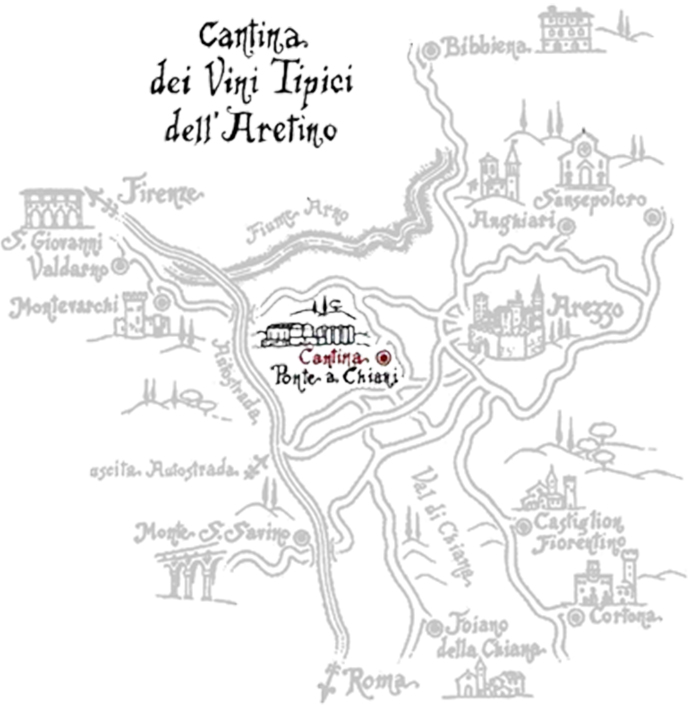
Arezzo, in the heart of Tuscany, boasts a millenial tradition in the culture of the grapevine cultivation , first Etruscans , and later Romans started the viticulture and the wine production . Their legacy has arrived to the present day. With our 400 associated and our daily dedication we are part of the wine tuscan tradition.
Our province ,divided into valleys , boasts a rich biological diversity. In the valley of Casentino there are rough texture lands rich in shale , marl and sandstones , that give fresh and mineral wines , in the Valdarno valley the fluvial lands with a sandy and clayey substratum give to wines floral and spicy notes with great persistence . The Valdichiana valley , with its fluvial lands rich of carbonate gives wines with a wide range of flavours with fruity and spicy notes.
"The Etruscans were the first to cultivate vines in this region, starting in the 8th century BC."
TUSCANY, between history and wine culture
Tuscany is the italian region where the culture of wine boasts the most ancient traditions. Tuscan wine speaks a noble and ancient language, where simple farmers and noble families have dedicated themselves to the grapes cultivation for centuries.They used living trees as support of the grape:even nowadays in some areas of Tuscany you can notice traces of this aerial way of growing. This sustainable practice of the Tuscan tradition has left a natural and arboreal patrimony unique in our region. However, during the Roman Empire Tuscan wines begin to acquire the fame that will not abandon them in the following centuries up to nowadays . Nowadays Tuscan wines are known and appreciated all over the world , as well as the land that produces them.
"The regional landscape has been shaped over time in function of the grapevine showing signs of extraordinary and fascinating beauty.A land of gentle hills, light views , colours that turn to ocra Senese, to green to Maremman blue."
Tuscany is the region that has been able to best combine tourism with oenology, thanks also to the beauty and variety of its landscapes. Tuscany is a varied wine-growing landscape that embraces a wide band of irregularly spaced relief between the Apennines and the coastal plains. A varied morphology with areas ranging from tha Apuan Alps , consisting mainly of limestone and clay, to the hills of Chianti , composed of clay marl, sandsone and clay. The Metalliferous Hills and, further south, Monte Amiata have soil with a fluvial surface derived largely from the breaking up of volcanic rocks, sandstone, clay and tuff. The big variety of lands combined with the millennial tradition, make Tuscan one of the wine –producing region most appreciated in the world.



In each of our wines there is a story, there is the sun of the Tuscan Hills of Arezzo, there is our land and there are the people, the winemakers, the great protagonists of our cellar.
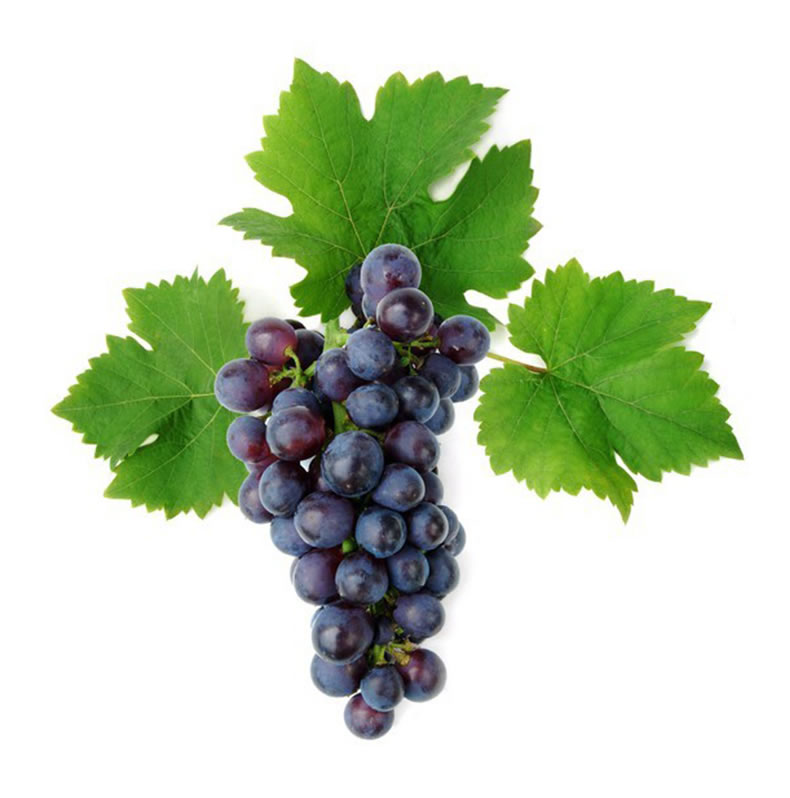
Chianti - History and characteristics
Chianti , which takes its name from the homonymous area, is the most known in the world italian red wine .The name of Chianti is mentiond for the first time in the end of fourteenth century , but the wine as we know it nowadays , made of Sangiovese enriched with Canaiolo and Trebbiano , was codified in the nineteenth century by Baron Ricasoli.Originally the Chianti area extended between Florence and Siena , but as far back at the year 1726 an announcement of the grand Duchy of Tuscany enlarged the area of production to the nearby lands, a decision ratified in 1932 by a decree of the king of Italy that at the same time definied the Chianti Classico area as the original one.
"The Chianti Colli aretino , whose excellent quality was first mentioned in the 14th century, is a Controlled and Guaranteed Designation of Origin red wine.D.O.C.G."
It is produced in the Province of Arezzo mainly using 75% to 100% Sangiovese and up to 10% black Canaiolo, Trebbiano or Malvasia of Chianti up to 10% and 10% other red varieties authorised by the regulations. The colour is ruby red, the flavour tends to be fresh and dry. It is a wine for the whole meal, medium alcoholic and to be drunk young. Some companies, however, produce more full-bodied wines suitable for conservation over time. The Chianti Colli DOCG has a minimum alcohol content of 12.5% and is sold from March following the harvest.
"Chianti Riserva, on the other hand, is aged for 24 months before being sold. This extraordinary wine has a minimum alcohol content of 13%."
From the steaming and tasty Tuscan soups to the delicious grilled meat, from stewed fish to boiled beef, the wines produced in the province of Arezzo are versatile wines, that go very well with any dish on the table. Discovering the wines of the hills of Arezzo is a sensory journey that brings you closer not only to the world of wine but also to the rich and fascinating gastronomic culture of the area.



